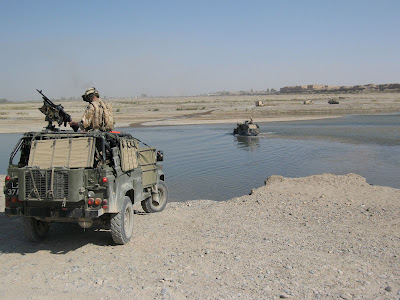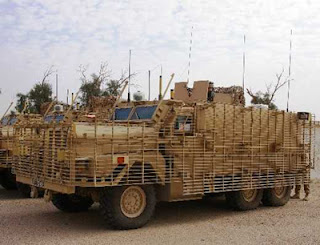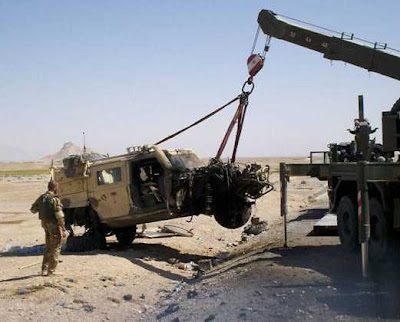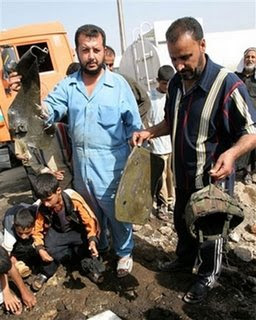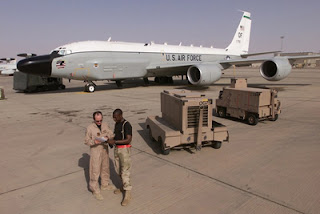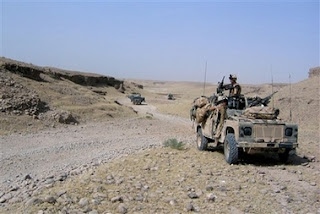
One instinctively distrusts Andrew Walker, the Oxford coroner widely quoted in today's media in connection with his verdict on the tragic death of Captain James Philippson during the evening of 11 June 2006 in Helmand province, Afghanistan.
This coroner has a history of grandstanding, and seems to revel in his reputation as the scourge of the MoD – his florid use of language out of keeping with the dignity of his office.
Thus do we get from Walker the accusation that the MoD betrayed soldiers' trust by sending troops to Afghanistan without basic equipment. He is widely cited as saying that, "totally inadequate" resources led to them being "outgunned by a bunch of renegades".
"The soldiers were defeated not by the terrorists but by the lack of basic equipment," Walker says. "To send soldiers into a combat zone without basic equipment is unforgivable, inexcusable and a breach of trust between the soldiers and those who govern them."
Unsurprisingly, the media have leapt upon these quotes with relish, but one wonders how many of the journalists and the many commentators, adding their penny-worth, had actually read the
Board of Inquiry (BOI) report into the incident.
To set the scene, Phillippson had been part of a Quick Reaction Force (QRF) which had volunteered to come to the aid of a patrol which had been ordered to investigate a report that an Unmanned Aerial Vehicle had crashed in the vicinity of its base. The patrol had not found the UAV and, on its journey back to its base, had been ambushed by the Taleban.
As to Phillippson’s death, this was occasioned by a gunshot wound to the head from an AK-47 but the BOI came to the conclusion that he had been killed:
…as a result of poor tactical decision-making, a lack of SOPs (Standard Operating Procedures) and lack of equipment.
The Board further concludes that the decision to retrieve the downed UAV might be question, "given its relatively low value, low security classification and the late hour at which the initial patrol deployed", had the patrol not been ordered to recover the UAV, "it is unlikely that the incident would have occurred".
From behind these stark findings, clear even from the measured tones of the BOI report and its caveats about "hindsight", emerges a story that can best be described as a "shambles".
In the first instance, the QRF was a composite force, comprised of 30 British Army personnel from 13 different Arms, who had never worked as a fighting team, plus four US personnel. As support, they had a detachment of Afghani soldiers who had not completed their training. Although a "formed infantry unit" would have been preferable, this was not available as ministers had put a cap on the number of troops which could be deployed to Afghanistan and the infantry units were deployed elsewhere.
To that extent, there attaches some political blame for the decision initially to send so few but, that aside, all soldiers are trained to fight and must expect to do so on occasions.
Where the rot started, though, was that despite the disparate nature of the force, its commanding officer – Major Jonathon Bristow – issued no SOPs, carried out no rehearsals for the various contingencies that might arise and, when the contact report came in on the fateful day, did not brief his patrol on the proposed route or any tactical procedures to be adopted. By his own admission, Major Bristow "had little idea about how he was going to conduct the link-up" and some members of the patrol deployed out of the base "without any idea where they were going".
In fact, the preparations had been so rushed that the patrol, nominally of nine vehicles, left the base six minutes after the contact report, leaving behind vital Bowman radios and two of its number, as the drivers could not find their ignition keys. These were in the pocket of an occupant of another of the patrol vehicles, that vehicle getting snarled up in barbed wire on its departure from the base. After some delay, it returned and the remainder of the vehicles followed on, meaning that the QRF had been split into two components.
As to the speed of response, the Board found that, to be ready in six minutes "represents either a very well rehearsed drill or an ill-prepared rush". Given that "no rehearsals had been conducted previously for this or any other contingency", the Board concluded it was "the latter".
Once on the road, without any clear idea of the route it was going to take, the first part of the QRF found itself on a narrow track which became too narrow to pass with the vehicles. Major Bristow, therefore, ordered the troops to dismount and proceed on foot. By so doing, the Board observed, he "significantly reduced the firepower at his disposal".
Crucially, without Bowman radios, the commanders was not in touch with his base. Had they been so equipped, the Board found, they would have been informed that the patrol he was seeking to "rescue" was no longer in contact with the enemy and "might have decided to abandon the foot patrol" and get back to the base.
Fatefully, though, the patrol continued. It was as the dismounted soldiers were well into the patrol that they came into contact with "between 12 and 15 people … with what looked like small-arms weapons" that there was an exchange of fire and Captain Philippson received his fatal gunshot wound.
Here, the lack of night vision goggles may have been as the 20 or so men in the patrol had been equipped only with three sets. The relevance comes when the armed men were first detected, when Major Bristow, leading the patrol, first spotted the enemy. He was equipped with night vision equipment, and shouted a warning to the rest of the patrol. However, his equipment was not mounted on his helmet which meant he could not observe and fire his rifle concurrently.
The narratives are confused, but one account has it that, after a short pause, Bristow fired "two or three rounds" in the enemy's direction, whence the Taleban returned fire, one of their shots killing Captain Philippson. The Board observed that, "if there was a lull between Major Bristow shouting the warning and then firing 2-3 rounds (occasioned by the type of night sight he was using) then it may have given the enemy enough time to react aggressively".
On the other hand, though, the Board also observes that Bristow should not have been leading the patrol as point, and was thus not in the best position to command his troops or deal with the tactical action that followed. "At the very least", it stated, he should have been behind his patrol sergeant who did have a rifle fitted with a night sight, and had observed the Taleban "moments before" the Major.
On such slender grounds does the coroner allege "betrayal" and the media makes much of the fact that he also asked Major Bristow if his troops could have matched their attackers if they been supplied with Minimi machine guns and under-slung grenade launchers. Bristow told the court: "It would have made a hell of a difference. We lost the initiative through a lack of firepower and thus the Taliban had a greater weight of firepower."
The Board agrees that the patrol did lose the initiative, but only after the death of Captain Philippson. Then, for five minutes, there was widespread confusion – but the Board also concludes that the firepower available "was sufficient for dealing with the enemy action".
The patrol, in fact, did, have one General Purpose Machine Gun (GPMG) detached from one of the WIMIKs in the mounted force. Had the QRF not become split, there would have been two such weapons available. But more firepower – whether Minimi machine guns or GPMGs - says the Board, would only "have allowed a swifter extraction from the killing area".
So, the truth of this matter was that this patrol was ill-prepared, badly led and disorganised to the point almost of being shambolic. Had any number of events been different – not least the ill-advised and unnecessary attempt to recover the UAV - the tragic outcome could have avoided. And in this toxic mix, the role of equipment – and any inadequacies in its supply – were marginal and of lesser importance. In truth, an "ill-prepared rush" led to a gallant soldier being killed.
To be fair to the troops involved and their commanders, the BOI concludes that the patrol "was being ordered ... to conduct independent manoeuvre operations beyond its capability and capacity at that time". It adds that, in future, the mission should be given to a "formed infantry unit" well rehearsed in the procedures relevant to "conducting full-spectrum operations within a counter-insurgency context".
That, if anything, was where the fundamental failure lay but, once again, the media – with the aid of a grandstanding coroner - have distorted the truth.
COMMENT THREAD
